Last updated on 25/11/2020
What is the difference between Power Apps for external users and Power Apps Portals? The short answer is; They are two different products.
The confusion comes from Microsoft Marketing choice of words when launching the October release updates “Enable external access with portals”
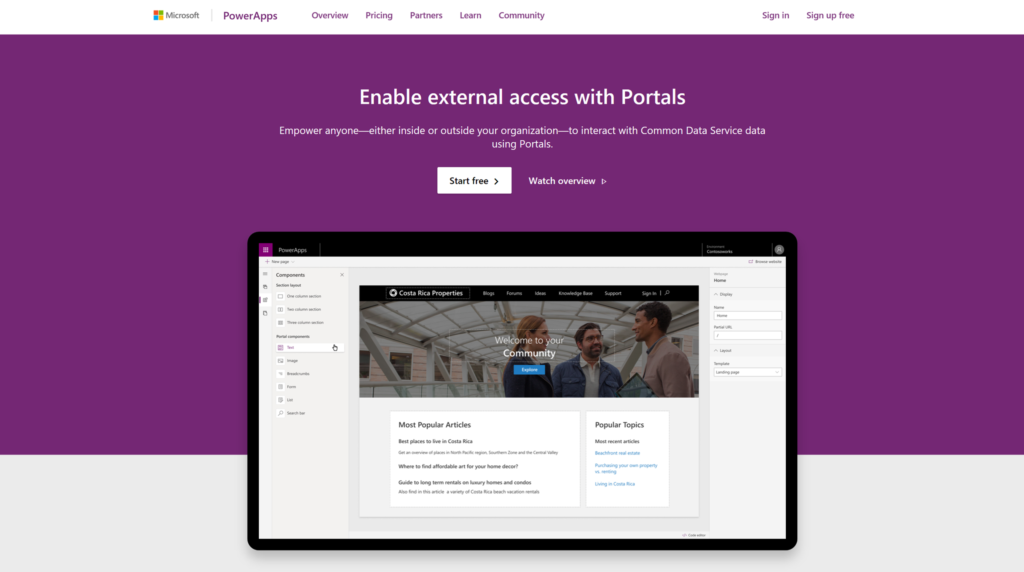
The wording is of course correct – you can enable external access to you data stored in Common Data Service trough portals. But you can as of October do the same thing by sharing a Power App with external users as well. Two products to solve the same needs.
Share Power Apps with external users
As of October 2019 we are able to share our Power Apps with external users. The users must be guest users in your tenants Azure AD. They must also have lisence to use Power Apps – in your tenant or at their home tenant.
For instructions on how to share your Power App with external users look at documentation here: https://docs.microsoft.com/en-us/powerapps/maker/canvas-apps/share-app
Not all connectors are available for external share just yet – and frankly I was hoping this list would be updated more frequently then it has. This list will will tell you the connectors that are available for external sharing:
Make sure you share the connectors as well as the Power App itself. When users are added as guest users to your tenant they get an email (unless you script it) and when you share the Power App with them you have the option of sending email or not about the share.
When to use Power Apps for external users?
We created an example scenario for sharing Power Apps for external users at Next Level 2019 this October. This is a Power Apps for a campaign called “Tag the tagger” by a fictitious railway company called “Next Level Rails”. Citizens use the Power App to take pictures of graffiti around the city and submit it with map coordinates. Data is stored in CDS with makes it easy to create PowerBI reports showing the state of graffiti in the city landscape.
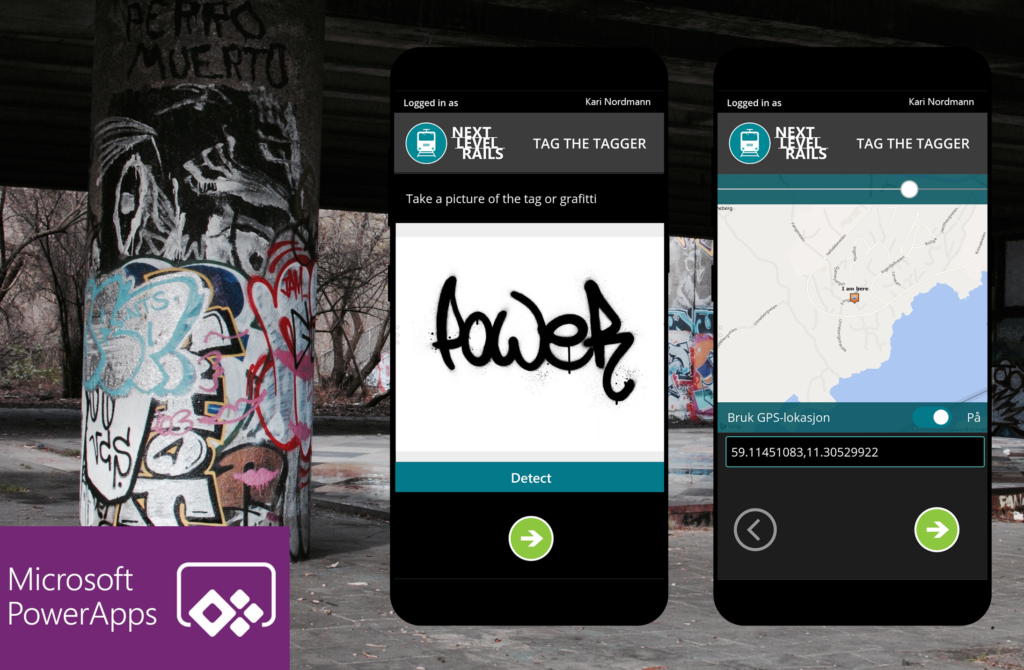
Power Apps Portals
As of October 2019 Release the Dynamics 365 Portals infrastructure has moved to the Common Data Service. We also got a new configuration layer trough the Power Apps management interface at www.make.powerapps.com. The portals were re-branded as “Power Apps Portals” and given the purpose of “Enable external access trough Power Apps Portals”.
Power Apps Portals are websites, and by nature they are accessible by external users. You can allow your external users to access your data anonymously as unauthenticated users or as external users logged in to the portal trough common identity providers as Facebook, Twitter, LinkedIn, etc. You can also use Azure login and enable access to your internal users. This is nothing new and has been possible ever since Microsoft bought the product from Microsoft.
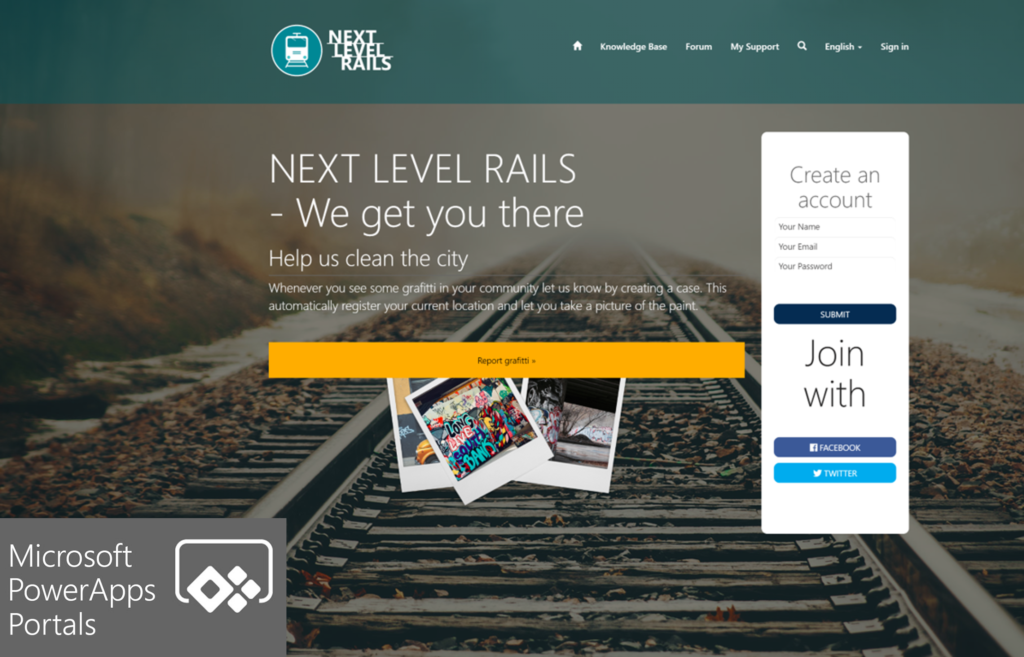
New Portals Designer
What is new is the no-code/low-code interface where no-coders can work with pages, templates, sitemaps and content. It’s called the “Portals Designer” and in my opinion is what has been missing in the Portals product. This is a huge improvement and make the portal configuration more accessible to editors and content managers who don’t know they way around HTML, CSS, jQuery and Liquid code. The new Portals Designer is a WYSIWYG editor that allow drag’n drop, simple inline styling and light weight configuration of lists and forms all in one context. It’s truly powerful and I will tell you more about it in another post.
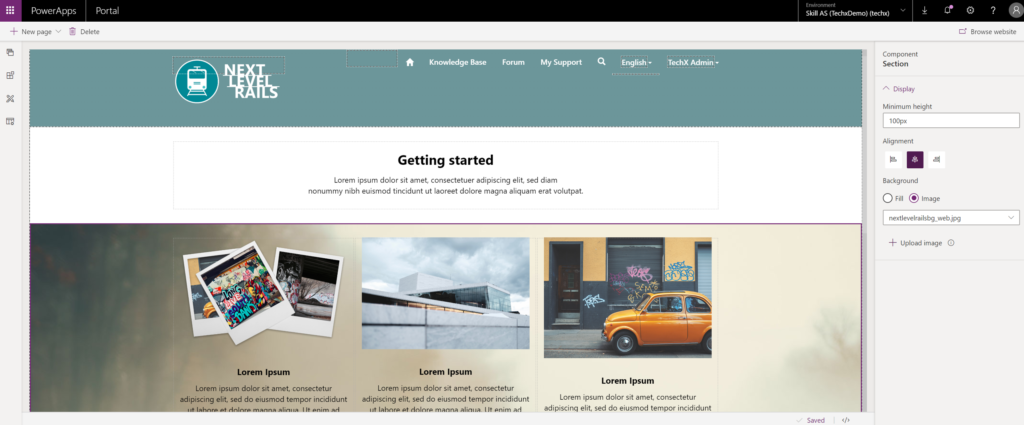
Summary
What is new with Power Apps? The ability to share it with external users and give them access to your data stored in CDS.
What is new to Power Apps Portals is the new Portals Designer. Portals are by nature accessible to external users if you configure them with external access. This is another way to give your external users access to data stored in CDS.
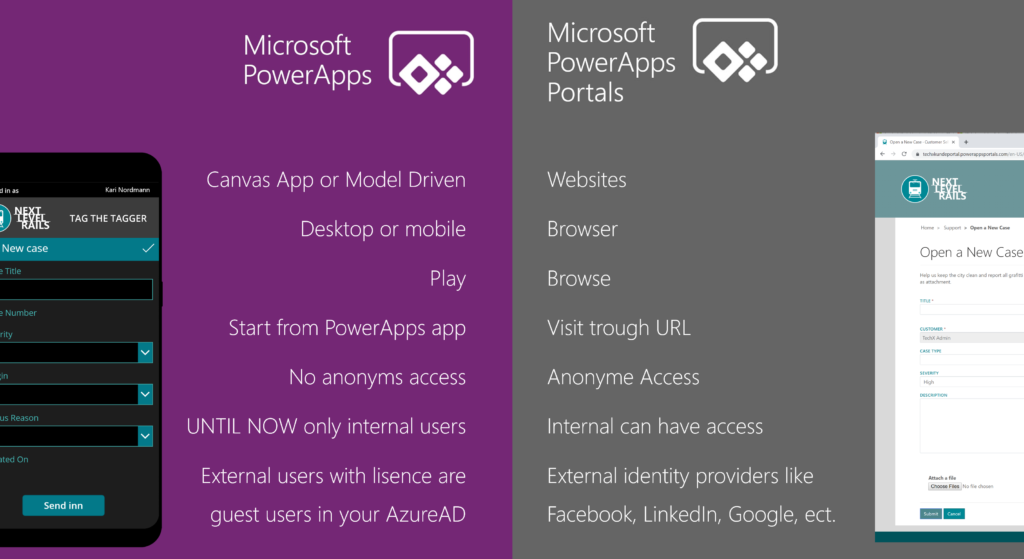
Now stay tuned for my post on the different layers we can use to configure our portals.
All the best, Ulrikke.
Straight forward and clear. Thanks Ulrikke.
Thank you, Eric.
[…] with portals” and it created some confusion. If you are still a little confused about the difference between Power Apps for external users and Power Apps Portals the link is to a blog post that will sort things out for […]
With PowerAp Portal and anonymous access License type of page views, can they create data? such as a Contact US/ Enquire request under this license type or will they need the external log license type?
Hi Peter. I am not an licensing expert and don’t really dare to answer. It’s getting harder and harder to understand the licensing. The best I can do is redirect you to Microsoft’s own documentation: https://powerapps.microsoft.com/en-us/blog/new-licensing-options-for-powerapps-and-flow/ and https://docs.microsoft.com/en-us/power-platform/admin/powerapps-flow-licensing-faq. Good luck.
Very interesting, will dive deeper into this subject. A small remark:
“This is nothing new and has been possible ever since Microsoft bought the product from Microsoft.” Microsoft twice?
hi ulrikke,
if i grant external user licenses let say test@gmail.com. how many people can log on with the external account concurrently
Hello Isaac. I am not sure how many people can be logged in with one user at the same time. I can log in to my portal from different browsers at once, so at least 3 concurrently I would say. Now, that being said, I would not recommend having a setup where you let multiple people use the same login. If I read the license guide correctly, the cost will be the same if three people log in with the same account as if they use three different accounts.
Let me know if there is anything else I can help you with.
Cheers! Ulrikke
Hi Ulrikke, Thanks so much for this post! Do you know if I can give an outside contractor access to Power Automate app only? We want them to work on a business flow but not have access to anything else! Appreciate your opinion!
Hello Mitch.
This is a perfect use case for the Partner Portal. Look at this features matrix on Microsoft Portal documentation here: https://docs.microsoft.com/en-us/powerapps/maker/portals/portal-templates#portal-templates-features and more information about Partner Portals on MS Learn here: https://docs.microsoft.com/en-us/learn/modules/explore-portals/5-partner.
I would create a Partner Portal with a guided user experience giving the users the ability to work on the data in a business flow manner. Let me know if you need more information. Hope it helps. Have fun!
Thank you very much.
When you talk about share a power app to a external user, you mean this external user can modify it? What do I/other user need to only use a power app form?
Hello Benjamin Garcia. According to Microsoft documentation “Guests can only be assigned the User role, and not the Co-owner role, for apps shared with them.” You need to register them as guest users and assign them a licence if they haven’t got one already at their home tenant. Then they can use your Power App Form. Or – you can create a Portal with your form and share this with them instead. Hope it helps. Good luck.
Hello Ulrikke,
great article thanks for creating it. This is just about what I recently stumbled upon. Do you think it is safe to say that through sharing an app to guest users I can stay more in control of licensing costs?
For example, I could assign a per app license plan. Given recent update on licensing model I would pay 10€ per user per month if and only if the user is actually accessing that app during the month, while with the portals login model I would have to purchase login units in advance coherently to the peak usage.
Of course, I would have to reinvent the wheel many times…
Cheers
Hello Pietro. Yes, if you have very few users and know who all your users are; then a Power App Canvas App would be cheaper and more predictable in terms of licencing cost. The first tier for a Portal with logins and page views are $300 each month. You can potentially have 60 users with “Power Apps Per App Plan” at $5 per user per month or 30 users with a “Power Apps Pay-as-you-go Plan” at $10 per user per month. More information here: https://powerapps.microsoft.com/en-us/pricing/
Now – please let me urge you to consider who the user is, how they would prefer to access the data, and what they need to do with it be the primary factors when choosing between Power Apps Portals or Canvas Apps shared with external users.
Hope this answer your question. All the best – and good luck.